FACULTY MENTORS
- Dr. Sos Agaian, image processing and data analytics, homepage
- Dr. Feng Gu [2016, 2017], system modeling and simulation, homepage
- Dr. Lihong Connie Li, medical imaging and computer aided detection systems, homepage
- Dr. David Lindo-Atichati, oceanography across disciplines, homepage
- Dr. Sharon Loverde, computational simulations, homepage
- Dr. Louis Petingi [2015, 2016, 2017, 2018] network reliability and graph theory, homepage
- Dr. Jia Xu, competitive machine translation systems, homepage
- Dr. Shuqun Zhang [2015, 2016, 2017] image processing, homepage
- Dr. Xiaowen Zhang [2015, 2016, 2017, 2018], cryptography and cybersecurity, homepage
- Dr. Zhanyang Zhang [2015], sensor networks, homepage
Dr. Sos Agaian
 Dr. Sos S. Agaian is a Distinguished Professor of Computer Science at College of Staten Island and the Graduate Center, City University of New York (CUNY). Prior to joining CUNY, Dr. Agaian was the Peter T. Flawn Professor of Electrical and Computer Engineering at the University of Texas at San Antonio; Graduate School of Biomedical Sciences UTHSCSA at San Antonio; Professor of UT System Cyber and Cloud Security Initiative, and Director of Multimedia and Mobile Signal Processing Laboratory. Professor Agaian has been a visiting faculty at the Tufts University, the Tampere Institute of Technology, and the Leading Scientist at the AWARE, Inc. at Bedford, MA. Dr. Agaian received a Ph.D. in Mathematics and Physics from the Steklov Institute of Mathematics, Russian Academy of Sciences (RAS); and Doctor of Engineering Sciences degree from the Institute of Control Systems, RAS. Dr. Agaian's research interests are in Big and Small Data Analytics, Computational Vision and Sensing, Machine Learning and Urban Computing, Multimodal Biometric and Digital Forensics, Information Processing and Fusion, and Fast Algorithms. Dr. Agaian has developed applications in Healthcare, Biomedical Data Mining, Object Recognition, Signal Processing, Computer-Aided Food Quality Inspection, 3D Imaging Visible and Thermal Sensors, Computational Photography, Multimedia Security, Needs-Driven Medical and Biomedical Technology, Finance, and Other Related Areas. Memberships (The Journal of Electronic Imaging (SPIE, IS&T); IEEE Transaction on Image Processing; IEEE Transaction on Systems, Man, and Cybernetics; Editorial Board Member for the Journal of Pattern Recognition and Image Analysis; etc.) . Please visit his homepage.
Dr. Sos S. Agaian is a Distinguished Professor of Computer Science at College of Staten Island and the Graduate Center, City University of New York (CUNY). Prior to joining CUNY, Dr. Agaian was the Peter T. Flawn Professor of Electrical and Computer Engineering at the University of Texas at San Antonio; Graduate School of Biomedical Sciences UTHSCSA at San Antonio; Professor of UT System Cyber and Cloud Security Initiative, and Director of Multimedia and Mobile Signal Processing Laboratory. Professor Agaian has been a visiting faculty at the Tufts University, the Tampere Institute of Technology, and the Leading Scientist at the AWARE, Inc. at Bedford, MA. Dr. Agaian received a Ph.D. in Mathematics and Physics from the Steklov Institute of Mathematics, Russian Academy of Sciences (RAS); and Doctor of Engineering Sciences degree from the Institute of Control Systems, RAS. Dr. Agaian's research interests are in Big and Small Data Analytics, Computational Vision and Sensing, Machine Learning and Urban Computing, Multimodal Biometric and Digital Forensics, Information Processing and Fusion, and Fast Algorithms. Dr. Agaian has developed applications in Healthcare, Biomedical Data Mining, Object Recognition, Signal Processing, Computer-Aided Food Quality Inspection, 3D Imaging Visible and Thermal Sensors, Computational Photography, Multimedia Security, Needs-Driven Medical and Biomedical Technology, Finance, and Other Related Areas. Memberships (The Journal of Electronic Imaging (SPIE, IS&T); IEEE Transaction on Image Processing; IEEE Transaction on Systems, Man, and Cybernetics; Editorial Board Member for the Journal of Pattern Recognition and Image Analysis; etc.) . Please visit his homepage.
Dr. Feng Gu
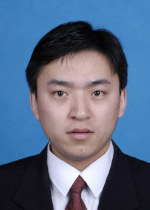 Feng is currently an Assistant Professor of Computer Science at College of Staten Island, The City University of New York. He received his B.S. degree in mechanical engineering from China University of Mining and Technology and M.S. degree in information systems from Beijing Institute of Machinery. He obtained his M.S. and Ph.D. degrees in computer science from Georgia State University. His research interests include modeling and simulation, complex systems, and high performance computing. He is a recipient of Natural Science Foundation Research Initiation Award from 2013 to 2014. He was an Assistant Professor of Computer Science from 2010 to 2013 and the Chair of Department of Computer Science and Mathematics from 2012 to 2013 at Voorhees College, Denmark, South Carolina. Please visit his homepage.
Feng is currently an Assistant Professor of Computer Science at College of Staten Island, The City University of New York. He received his B.S. degree in mechanical engineering from China University of Mining and Technology and M.S. degree in information systems from Beijing Institute of Machinery. He obtained his M.S. and Ph.D. degrees in computer science from Georgia State University. His research interests include modeling and simulation, complex systems, and high performance computing. He is a recipient of Natural Science Foundation Research Initiation Award from 2013 to 2014. He was an Assistant Professor of Computer Science from 2010 to 2013 and the Chair of Department of Computer Science and Mathematics from 2012 to 2013 at Voorhees College, Denmark, South Carolina. Please visit his homepage.
Dr. Lihong Connie Li
 Lihong Connie is a Professor in the Department of Engineering Science and Physics at CSI. Her research interests include signal processing, image processing, medical informatics, pattern recognition, and computer vision. Dr. Li was a member of the original pioneer team who developed virtual colonoscopy, a safe minimal-invasive approach to detect colonic polyps using medical imaging and computer graphics technologies. Currently, she serves on the doctoral faculty of the CUNY Ph.D. Program of Electrical Engineering, on the Editorial Board of the Journal of X-Ray Science and Technology, and as a CSI branch advisor for IEEE and Society of Women Engineers (SWE). Please visit her homepage.
Lihong Connie is a Professor in the Department of Engineering Science and Physics at CSI. Her research interests include signal processing, image processing, medical informatics, pattern recognition, and computer vision. Dr. Li was a member of the original pioneer team who developed virtual colonoscopy, a safe minimal-invasive approach to detect colonic polyps using medical imaging and computer graphics technologies. Currently, she serves on the doctoral faculty of the CUNY Ph.D. Program of Electrical Engineering, on the Editorial Board of the Journal of X-Ray Science and Technology, and as a CSI branch advisor for IEEE and Society of Women Engineers (SWE). Please visit her homepage.
Dr. David Lindo-Atichati
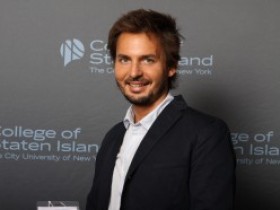 David is an Assistant Professor of the Department of Environment Science. He received his Ph.D. in Physical Oceanography, from the University of Las Palmas (ULPGC), and courses and research completed at University of Miami (RSMAS) from 2009 to 2012. He is currently holding a Guest Investigator appointment at Woods Hole Oceanographic Institution. Prior to becoming a faculty member at CUNY, he was a postdoctoral scholar at the University of Miami and worked at the National Oceanographic and Atmospheric Administration (NOAA). Dr. Lindo-Atichati research is at the frontiers of physics, biology, and chemistry in the oceanic systems. Please visit his homepage.
David is an Assistant Professor of the Department of Environment Science. He received his Ph.D. in Physical Oceanography, from the University of Las Palmas (ULPGC), and courses and research completed at University of Miami (RSMAS) from 2009 to 2012. He is currently holding a Guest Investigator appointment at Woods Hole Oceanographic Institution. Prior to becoming a faculty member at CUNY, he was a postdoctoral scholar at the University of Miami and worked at the National Oceanographic and Atmospheric Administration (NOAA). Dr. Lindo-Atichati research is at the frontiers of physics, biology, and chemistry in the oceanic systems. Please visit his homepage.
Dr. Sharon M. Loverde
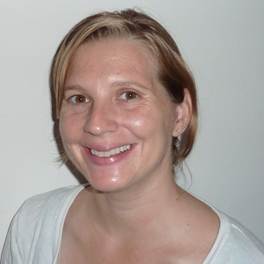 Sharon M. Loverde, PhD, is an Assistant Professor in the Chemistry Department at College of Staten Island, a senior campus at the City University of New York (CUNY). She is also a faculty member of the Graduate Center of CUNY in the areas of Chemistry, Biochemistry, and Physics. Dr. Loverde's research focuses on molecular dynamics simulations of self-assembly in soft and biological systems. In particular, Dr. Loverde is interested in the development of multi-scale simulation toolsets to predict the structure and stability of assemblies ranging from supramolecular fibers composed of peptide amphiphiles to microtubules, a supramolecular filament found in the cytoskeleton. Dr. Loverde is also strongly interested in the development of simulation methodologies to probe the interactions of hydrophobic drugs with model polymeric and phospholipid membranes. Prior to CUNY, Dr. Loverde was an NIH NRSA Postdoctoral Fellow who worked with Dennis E. Discher (UPenn) and Michael L. Klein (Temple). She received her PhD in Materials Science and Engineering from Northwestern University working with Monica Olvera de la Cruz. Please visit her homepage.
Sharon M. Loverde, PhD, is an Assistant Professor in the Chemistry Department at College of Staten Island, a senior campus at the City University of New York (CUNY). She is also a faculty member of the Graduate Center of CUNY in the areas of Chemistry, Biochemistry, and Physics. Dr. Loverde's research focuses on molecular dynamics simulations of self-assembly in soft and biological systems. In particular, Dr. Loverde is interested in the development of multi-scale simulation toolsets to predict the structure and stability of assemblies ranging from supramolecular fibers composed of peptide amphiphiles to microtubules, a supramolecular filament found in the cytoskeleton. Dr. Loverde is also strongly interested in the development of simulation methodologies to probe the interactions of hydrophobic drugs with model polymeric and phospholipid membranes. Prior to CUNY, Dr. Loverde was an NIH NRSA Postdoctoral Fellow who worked with Dennis E. Discher (UPenn) and Michael L. Klein (Temple). She received her PhD in Materials Science and Engineering from Northwestern University working with Monica Olvera de la Cruz. Please visit her homepage.
Dr. Louis Petingi, PI
 Louis is a Professor, and former Chair of Computer Science Department. His research interests are in network reliability and extremal graph theory. In Network Reliability, network components (nodes and communication links) may be subject to random failures, due for example to components wear-out or actions of intentional adversaries. The reliability of a network is the probability that the network withstands these failures. Reliability models are mathematical in nature, based upon Graph Theory, and they are applied to measure performance objectives of Wireless, Optical, and general communication networks. In addition these models are used to find a more reliable network to an existing one, by improving the communication between groups of communication nodes called participating nodes. Louis is also interested in other areas of research including optimization problems in Graph Theory as well as the analysis of RNA structure and function in Biology. Please visit his homepage.
Louis is a Professor, and former Chair of Computer Science Department. His research interests are in network reliability and extremal graph theory. In Network Reliability, network components (nodes and communication links) may be subject to random failures, due for example to components wear-out or actions of intentional adversaries. The reliability of a network is the probability that the network withstands these failures. Reliability models are mathematical in nature, based upon Graph Theory, and they are applied to measure performance objectives of Wireless, Optical, and general communication networks. In addition these models are used to find a more reliable network to an existing one, by improving the communication between groups of communication nodes called participating nodes. Louis is also interested in other areas of research including optimization problems in Graph Theory as well as the analysis of RNA structure and function in Biology. Please visit his homepage.
Dr. Jia Xu
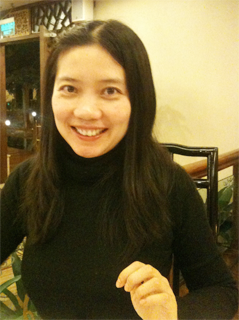 Jia is an Assistant Professor of Computer Science at CUNY - Graduate Center and Hunter College. Prior to CUNY she was an associate professor at the Institute of Computing Technology, Chinese Academy of Sciences (Beijing), an assistant professor at Tsinghua University (Beijing), a project leader and senior researcher in the language technology group at DFKI, Germany. Her current research interests are in Machine Learning with a focus towards highly competitive machine translation systems. Lately, she has developed an interest and devise techniques that explore the underlying Metric and Geometric properties of machine translation systems. She is publishing in mainstream venues in computational linguistics and machine learning (e.g. AAAI, ICML, ACL) and often she is leading teams that win first (or one of the first) position in machine translation competitions. Please visit her homepage.
Jia is an Assistant Professor of Computer Science at CUNY - Graduate Center and Hunter College. Prior to CUNY she was an associate professor at the Institute of Computing Technology, Chinese Academy of Sciences (Beijing), an assistant professor at Tsinghua University (Beijing), a project leader and senior researcher in the language technology group at DFKI, Germany. Her current research interests are in Machine Learning with a focus towards highly competitive machine translation systems. Lately, she has developed an interest and devise techniques that explore the underlying Metric and Geometric properties of machine translation systems. She is publishing in mainstream venues in computational linguistics and machine learning (e.g. AAAI, ICML, ACL) and often she is leading teams that win first (or one of the first) position in machine translation competitions. Please visit her homepage.
Dr. Shuqun Zhang
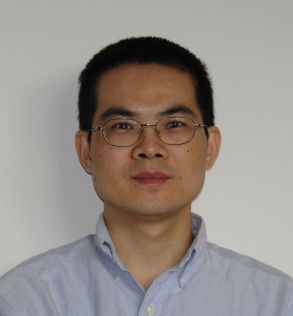 Shuqun is a Professor at College of Staten Island and a PhD faculty member at Graduate Center, CUNY. He received his PhD degree in electrical engineering from University of Dayton, his MS and BS degrees in electrical engineering from Xiamen University. He was a visiting faculty research fellow at the Air Force Research Laboratory (AFRL), Rome, NY (summer 2003-2006). His research interests include image processing, computer vision, pattern recognition, digital holography, and optical information processing. Please visit his homepage.
Shuqun is a Professor at College of Staten Island and a PhD faculty member at Graduate Center, CUNY. He received his PhD degree in electrical engineering from University of Dayton, his MS and BS degrees in electrical engineering from Xiamen University. He was a visiting faculty research fellow at the Air Force Research Laboratory (AFRL), Rome, NY (summer 2003-2006). His research interests include image processing, computer vision, pattern recognition, digital holography, and optical information processing. Please visit his homepage.
Dr. Xiaowen Zhang, Co-PI
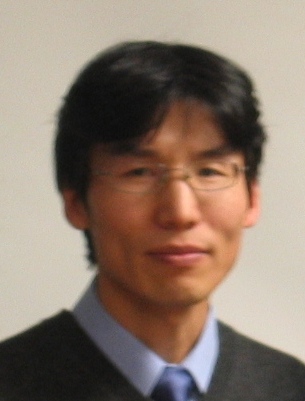 Xiaowen is an Associate Professor at College of Staten Island and a PhD faculty member at Graduate Center, CUNY. He received a PhD in Computer Science from City University of New York and a PhD in Electrical Engineering from Beijing Jiaotong University. His research interests include information security, cryptography, wireless communications, biometrics, and RFID security & privacy. Please visit his homepage.
Xiaowen is an Associate Professor at College of Staten Island and a PhD faculty member at Graduate Center, CUNY. He received a PhD in Computer Science from City University of New York and a PhD in Electrical Engineering from Beijing Jiaotong University. His research interests include information security, cryptography, wireless communications, biometrics, and RFID security & privacy. Please visit his homepage.
Dr. Zhanyang Zhang
 Zhanyang acquired his PhD degree in computer science from the City University of New York. He received a MS degree in computer science from the College of Staten Island and a BE degree in computer engineering from Jilin University, China. He is currently a faculty member of Computer Science Department at both College of Staten Island and Graduate Center, the City University of New York (CUNY). His current research interests include wireless ad hoc networks, sensor networks, RFID and its applications, underwater sensor networks, and mobile computing and database. He is also a visiting professor at several Universities in China, including Hebei University, North China Electrical Power University and Jilin University. Before joining CUNY, he was a member of technical staff (MTS) at Bell Labs, Lucent Technology. He also worked as an IT consultant at different companies in New York City and New Jersey State. Please visit his homepage.
Zhanyang acquired his PhD degree in computer science from the City University of New York. He received a MS degree in computer science from the College of Staten Island and a BE degree in computer engineering from Jilin University, China. He is currently a faculty member of Computer Science Department at both College of Staten Island and Graduate Center, the City University of New York (CUNY). His current research interests include wireless ad hoc networks, sensor networks, RFID and its applications, underwater sensor networks, and mobile computing and database. He is also a visiting professor at several Universities in China, including Hebei University, North China Electrical Power University and Jilin University. Before joining CUNY, he was a member of technical staff (MTS) at Bell Labs, Lucent Technology. He also worked as an IT consultant at different companies in New York City and New Jersey State. Please visit his homepage.
INVITED SPEAKERS & THEIR TALKS
Summer 2017
Dr. Yumei Huo, Associate Professor, CUNY - College of Staten Island. Title: Two Machine Scheduling Subject to Arbitrary Machine Availability Constraint. Abstract: We study two machine scheduling subject to arbitrary machine availability constraint. We assume the jobs can be resumed after being interrupted by the unavailable intervals. We consider both the single criterion and the bi-criteria problems concerning two most common criteria: makespan and the total completion time. For single criterion, Liu and Sanlaville \cite{-ls95} have shown that makespan minimization problem with arbitrary machine availability constraint is solvable in polynomial time in 1995. However, for total completion time minimization problem, while some special cases have been studied, the complexity of the problem with arbitrary machine availability constraint remains open. For bi-criteria problems, except the special cases studied by the authors, the complexity of the two bi-criteria problems with arbitrary machine availability, i.e., the problem of minimizing the total completion time subject to the constraint that the makespan is minimum, and the problem of minimizing makespan subject to the constraint that total completion time is minimum, are also open. In this research, we show all these three open problems are in P by giving optimal polynomial time algorithms. An interesting finding in this research is that these three problems are closely related to each other and thus the algorithms also rely on one another.
Dr. Weihua Liu, Assistant Professor, William Paterson University of New Jersey. Title: Cryptography, Stream Cipher, and Register Synthesis Algorithms. Abstract: Cryptography has many applications in our daily life. Stream cipher is a symmetric cryptosystem that encrypts one bit or byte of plaintext at a time. The encryption is using pseudorandom sequences generated by registers as the key. Security in register design has been a big concern. Given a short prefix of a sequence, it is undesirable to have an efficient algorithm that can synthesize a pseudorandom sequence generator, which can predict the whole sequence. Otherwise, a cryptanalytic attack can be launched against the system based on that given sequence. So finding such a synthesis algorithm is an interesting problem in cryptanalysis. This presentation will briefly describe the design of stream cipher and talk about some recent research on register synthesis algorithms.
Dr. Sharon M. Loverde, Assistant Professor, CUNY - College of Staten Island. Title: Molecular Simulations of Peptide-Drug Amphiphiles. Abstract: Supramolecular filaments composed by peptide-amphiphiles have excellent potential for biomedical, optical, and electronic applications. There are numerous studies in the computational modeling of peptide-amphiphile self-assembly. In particular, we investigate the molecular self-assembly process of peptides conjugated with the cancer drug camptothecin recently reported by the Cui laboratory using all-atomistic molecular dynamics simulations. We find that p-p interactions mediate aggregation in the early stages of the self-assembly process (less than 50 nanoseconds), while p-p stacking balanced with hydrogen bonding stabilize the resulting filament shape. In addition to elucidating the self-assembly behavior of peptide amphiphiles with aromatic rings, these results also elucidate the role of p-p stacking in mediating chirality in functional supramolecular filaments. Furthermore, as more hydrophobic drugs are attached to the peptide, a transition from filament to nanotube morphology is seen experimentally. We probe the structure of these peptide-amphiphile nanotubes, exploring the degree of p-p stacking and solvation of the nanotube structure, compared with the filament morphology. In order to characterize the structure and stability of the filaments, we also perform microseconds long simulations of near micron long filaments using a new coarse-grained model using GPU's, and examine the break-up process at high temperatures. We expect that these computational methodologies can be utilized to probe the self-assembly structure and stability of further supramolecular assemblies.
Dr. Miaomiao Zhang, Assistant Professor, Manhattan College. Title: Redactable Precedence Graphs. Abstract: We introduce and study a new family of (probability distributions over) labeled graphs: Redactable precedence graphs. Given an alphabet A_n = {a_1,...,a_n}, a redactable precedence graph family is a collection H={H_n}_{n=1,...} of probability distributions on labeled directed acyclic graph (DAG) families, such that the following properties holds for every n=1,...: (a) [linear reachability] for every n, the reachability relation on each graph in the support of H_n is a linear order; (b) [redactability] after a choice of H = (V,E) -- H_n followed by a random choice of i -- {1,...,n}, the result of removing the (unique) node labeled with a_i from H, thereby also suppressing all its incident arcs, yields an instance of H_{n-1}, chosen with the correct probability distribution. We propose a construction of a redactable precedence graph family based on multinomial distributions, and prove that, for properly chosen parameters, the expected size of a graph in H_n is linear in n (for all n). We also show that redactable precedence graph families are strict generalization of transitive tournaments. Our interest in redactable precedence graphs is motivated by the problem of designing digital signature schemes that support redaction. Given a document containing n subdocuments, a precedence relationship is a connection between two or more subdocuments where a subdocument must appear before another in order for the document integrity to be kept intact. Using our new graph family, we obtain efficient transparent redactable signature algorithms that hide the number and locations of redacted subdocuments. Other applications of redactable precedence graphs will also be discussed, time permitting.
Summer 2016
Dr. Qinghai Gao, Associate Professor, SUNY - Farmingdale State College. Title: Introduction to Biometrics. Abstract: Iris, face, and fingerprint recognition will be introduced, with an emphasis on forensic fingerprint classification and interpretation.
Dr. Ashwin Satyanarayana, Assistant Professor, CUNY - New York City College of Technology. Title: Introduction to Big Data Analytics with two applications (Search Engine Speller and Predicting student academic performance). Abstract: Big data is set to offer tremendous insight with terabytes and petabytes of data pouring in to organizations today. These data present tremendous opportunities in data mining, a burgeoning field in computer science that focuses on the development of methods that can extract knowledge from data. In this talk, we present two applications of big data - Search engine speller and predicting student performance. Search engines such as Google and Bing analyze big data to solve the speller problem by looking at huge volumes of user click data. The first part of the talk addresses this issue. In the second part of the talk, we talk about an emerging interdisciplinary research field also known as Educational Data Mining (EDM). One of the goals of EDM is to better understand how to predict student academic performance given personal, socio-economic, psychological and other environmental attributes. Another goal is to identify factors and rules that influence educational academic outcomes. We address this problem using multiple classifiers.
Dr. Dan McCloskey, Associate Professor, CUNY - College of Staten Island. By studying the African Naked Mole-rat, a unique and highly social fossorial rodent, and harnessing the power of the Interdisciplinary High-Performance Computing Center on the CSI campus. The computer center allows Dr. McCloskey to track the behavior of each of more than 100 animals in his colony with high resolution as they navigate their way through a complex system of tubes and cages. The animals are implanted with RFID tags. Each time an animal passes through a tube with a sensor, the identity, location, and time of that event is stored in a database that receives hundreds of thousands of events each day. Analysis of these large datasets requires the power of a high-performance computer to manage them and ask questions about animal behavior. In this manner, insights into the organized social community will help the researchers to understand how individual differences in social behavior are influenced by physiological and environmental factors and understand the role of social behavior brain systems in health, as well as develop deeper insights into diseases such as epilepsy and autism.
Dr. Yoonsang Lee, Postdoctoral Researcher, New York University - Courant Institute of Mathematical Sciences. Title: Estimation and prediction of complex systems using mathematical models and observations. Abstract : Scientists and engineers use mathematical models to predict and estimate physical systems or complex phenomena. But the models have limited applications mainly due to the fact that they are approximations to the unknown true signal. In this talk I will discuss a method known as data assimilation which combines a mathematical model with observational data of the true signal to improve the estimation and prediction skills. Simple but illustrative examples will be discussed and the current cutting-edge research topics which require collaborations between mathematicians, computer scientists and real application practitioners are also introduced.
Dr. Anand Sarwate, Assistant Professor, Rutgers University. Title: Learning from sensitive data while protecting privacy. Abstract: Personal or sensitive information about individuals is being collected and stored digitally at higher and higher volumes each day. There are many potential benefits from sharing this data: better understanding of medical treatments, improved fraud detection, and personalized recommendations. For many of these applications, the goal is to learn some property of the population (for example, patients with a given health condition), rather than about individuals. Unfortunately, many approaches for data sharing and machine learning may allow inference about individuals even though they are learning from populations. Several methods have been proposed to help protect individual privacy in these settings, from classical statistical disclosure control techniques used by the U.S. Census Bureau, to the more recently proposed differential privacy model, which seeks to quantify the risk of identifying whether any individual's data was part of the data set. In this talk I will describe some of these applications, techniques, and models, and give a brief survey of where privacy-preserving learning seems possible.
Dr. Shiri Azenkot, Assistant Professor, Jacobs Technion-Cornell Institute at Cornell Tech. Title: Designing Technology for People with Low Vision. Abstract: Visual impairments include a range of visual abilities. Many people have low vision, which means they have functional vision but they face visual challenges when performing daily activities. Unlike blind people, low vision people tend to use their vision in their daily lives. Most people with visual impairments have low vision and aren't blind, but there has been very little research addressing this user group. In my talk, I'll describe low vision and present an overview of the research my group is conducting in this area. We are working on studying the challenges that low vision people face when completing daily tasks such as shopping, and designing smart glasses applications to address these challenges.
Summer 2015
Dr. Anatoly Kuklov, Associate Professor, CUNY - College of Staten Island. Title: What a physicist can learn from supercomputers. Abstract: .
Dr. Raffi Khatchadourian, Assistant Professor, CUNY - Hunter College. Title: Automatic Migration of Legacy Java Method Implementations to Interfaces. Abstract: .
Dr. Li-Chiou Chen, Professor, Pace University. Title: Web Security and User Authentication. Abstract: Web transaction, Encryption, Server authentication, User authentication, Research on alternative ways of user authentication, Pace CyberCorps Scholarship Program.
Dr. Dan McCloskey, Associate Professor, CUNY - College of Staten Island. Title: Social behaviour of naked mole-rats. Abstract: .

